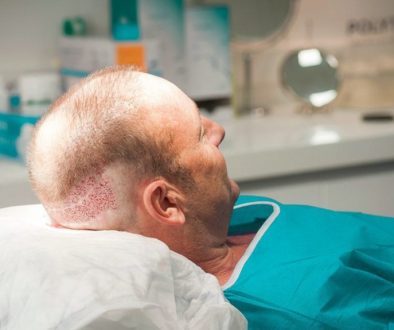“Chubby” Verses “Skinny” Hair Transplant Grafts
This question was posed by a hair loss sufferer on our hair restoration forum and answered by Dr. Michael Beehner of Saratoga Springs, NY who is one of our recommended hair restoration physicians. His professional answer is below.
 It was interesting reading Dr. Rose’s and my comments on this subject from several years ago. I thought I would try to update the readers on my thoughts concerning chubby grafts vs skinny grafts and also make a few additional comments regarding follicular unit graft survival.
It was interesting reading Dr. Rose’s and my comments on this subject from several years ago. I thought I would try to update the readers on my thoughts concerning chubby grafts vs skinny grafts and also make a few additional comments regarding follicular unit graft survival.
There is no question that a greater yield, sometimes beyond 100%, is possible with “chubby” grafts. Most small studies of reasonably trimmed follicular units shows that survival around 90% can be expected. The survival rates over the years on follicular units have varied tremendously, all the way from 80% up to over 100%.
I believe the biggest factor in high survival of follicular unit grafts is that the hair transplant doctor or hair transplant technician placing the grafts have years of experience and are conscientious about their work. Four years ago at the ISHRS (International Society of Hair Restoration Surgery) meeting in New York City, Dr. Kim from Korea and myself both presented studies in which we looked at follicular unit survival rates and interestingly we both came up with an identical 90% survival in our two studies.
The problem with a “chubby” graft is that it needs a “chubby” recipient site, and the larger the recipient site, the more damage there is to the scalp’s blood supply, which eventually is going to result in less hair for the hair transplant patient, perhaps at a second or third session because of the extra “micro-scarring.” Also, obviously, you can’t fit too many larger needle or slit holes into a given square area, so you are transplanting hair much less densely, which may result in more than the usual number of sessions to complete the work.
I see the main problem with using all extremely skinny, skeletonized FU’s is that the physical structure of the graft is very vulnerable to being damaged in the placement process by the hair transplant assistants. It is also more susceptible to becoming dried out if left on an assistant’s gloved finger too long. These two comments are in addition to possible damage to the “bulge” and dermal papilla areas, and also cutting off possible hidden telogen follicles. My ideal follicular unit, if “1” is the most skeletonized graft and “10” is a “chubby” graft with generous amounts of fat around the follicle structure, a 3 or 4 would be ideal, assuming you have capable placers. The only true “chubby” graft then would be many of the 3 and 4-hair FU’s we often see, which often spread out like seaweed and requires that all of that be cut around. For such hair grafts you need to make a few larger recipient sites, such as a 1.2 or 1.3mm lateral slit or 17/16g needle hole to fit into.
Mike Beehner, M.D.
—
Bill
Associate Publisher of the Hair Transplant Network and the Hair Loss Learning Center
View my Hair Loss Weblog
Technorati Tags: hair loss, chubby grafts, skinny grafts, follicular unit graft, follicular units, hair transplant doctor, hair transplant technician, ISHRS, International Society of Hair Restoration Surgery, hair transplant patient, transplanting hair, hair transplant, dermal papilla, telogen, hair grafts



